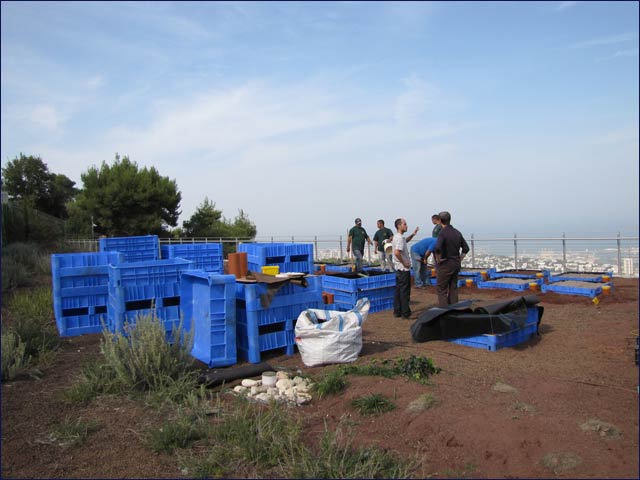By Avigayil Kadesh
Planting a green roof isn’t just a way to prettify an urban space. It can offer major environmental and ecological benefits to the surrounding areas, and that’s one reason the concept is gaining attention from researchers in many countries.
In October 2012, the University of Haifa dedicated its own Green Roofs Ecology Center, the first of its kind in the Middle East. Worldwide, it is one of the first ones to focus on ecology and biodiversity.
Professor Leon Blaustein, director of the center and head of the university’s Community Ecology Laboratory, explains that the lab’s research is specifically focused on how to conserve biodiversity within a developed environment.
“When you create a city, you’re destroying much of the natural habitat for plants and animals, and we want to mitigate this as much as possible with our rooftop habitats,” he says. “We’re experimenting with different types of substrate, drainage and plant assemblies in order to create a diverse plant community which will attract a diverse community of insects, birds and other fauna on these green roofs.”
Green roofs – which are not the same as heavily cultivated rooftop gardens -- have multiple benefits for the environment, he says. The growing substrate and foliage help insulate the building underneath so there is less need for fuel to heat and cool the interior. Green roofs also help reduce urban flash flooding by acting as a sponge for rain that otherwise falls onto concrete or asphalt surfaces that do not allow for natural seepage.
The Green Roofs Ecology Center will allow researchers to apply ecological principles into developing biodiverse green roofs suitable for arid climates. It will also provide opportunities for ecologists and evolutionary biologists to develop and test ecological theories, says Blaustein.
Though Israel is a world leader in drip irrigation methods, the researchers will try to make the green roofs flourish without artificial irrigation. One of the ideas they will test is using “gray” water from the building’s sinks or showers to both nourish the plants and purify the water.
Multidisciplinary, multinational cooperation
The Green Roofs Ecology Center was established with money from an overseas donor, says Blaustein, a professor at the university’s Institute of Evolution and department of evolutionary and environmental biology. “It’s been a wonderful experience for me because of [the donor’s] sincere enthusiasm about lessening people’s carbon footprint.”
The on-campus field site is currently set up with 48 experimental modules, each one a microcosm of a green roof geared to assessing how different substrate, drainage and plant assemblages can thrive and attract insects, birds and other fauna. Blaustein and his colleagues plan to create experimental green roof plots on additional roofs around the campus, the city of Haifa and other cities as well.

Green roofs have multiple benefits for the environment. Engineers, architects, urban planners, and ecologists are all involved in green roofs research. The Haifa project has participants that include pollination and plant ecologist Prof. Emeritus Amos Dafni, landscape ecologist Lior Blank, environmental management expert Shay Levy, green roofs and eco-design expert Gary Grant from London, and geography professors Noam Greenbaum and Dan Malkinson.
Doctoral candidate Amiel Vasl is running the experiment on the Student Union, while master’s degree candidate Ariel Solodar will be experimenting with gray water for irrigation.
The center’s international advisory board includes, among others, Prof. Ayal Ronen, an eco-architect who teaches at Bezalel Academy of Art and Design in Jerusalem; Rakefet Sinai, an architect affiliated with the Technio-Israel Institute of Technology; and Howard Wenger, California-based president of SunPower and various gardening companies.
“We are looking for collaborators outside the university, such as government and NGO officials,” says Blaustein, who has lately been in touch with interested scientists from Switzerland and the United States. “We’re just getting started.”